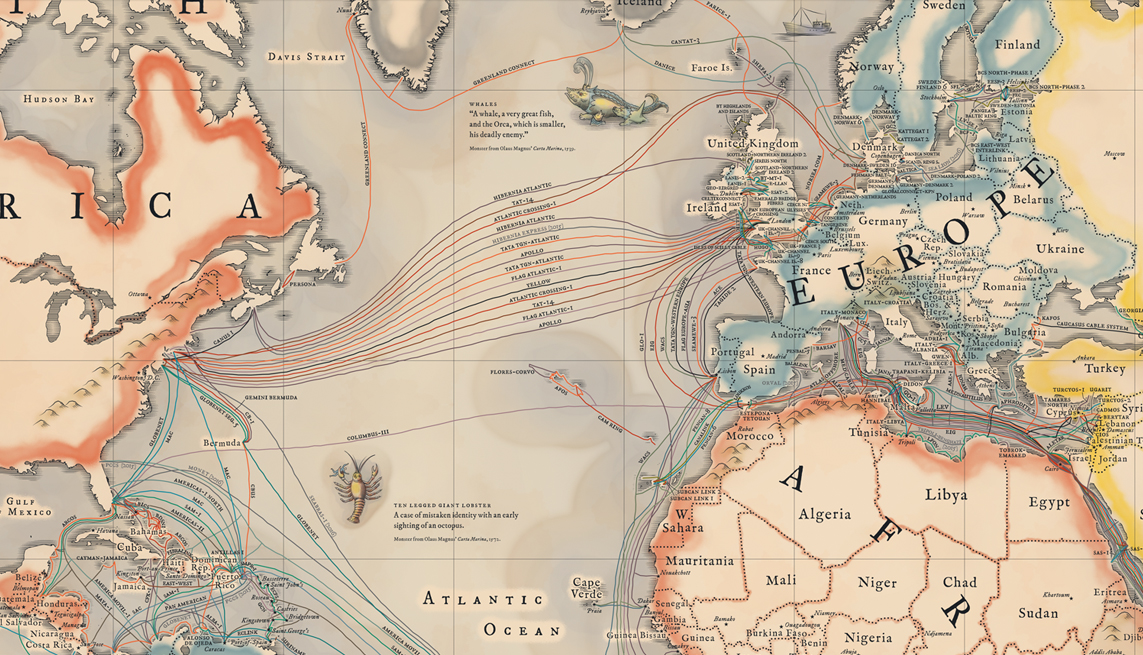As reported by ITWorld: Google’s ambitious plans to provide Internet access to remote areas via solar-powered drones are getting ready to take off.
Titan Aerospace, the drone-maker acquired last year by
Google to help realize the project, recently applied for and received
two licenses from the U.S. Federal Communications Commission to run
tests over the next six months.
 The licenses, which are
valid from March 8 until September 5, don’t give away much because
Google has asked the FCC to keep many of the details confidential for
commercial reasons, but they reveal the tests will take place inside a
1,345 square kilometer (520 square mile) area to the east of
Albuquerque. The area includes the town of Moriarty, where Titan
Aerospace is headquartered and conducts its research and development
work.
The licenses, which are
valid from March 8 until September 5, don’t give away much because
Google has asked the FCC to keep many of the details confidential for
commercial reasons, but they reveal the tests will take place inside a
1,345 square kilometer (520 square mile) area to the east of
Albuquerque. The area includes the town of Moriarty, where Titan
Aerospace is headquartered and conducts its research and development
work.
The drone experiments are one of two projects at Google to deliver Internet from the skies.
The other, called Project Loon, involves the use of high-altitude balloons and is already well underway.
Speaking at the Mobile World Congress expo in Barcelona earlier this month, Google’s Sundar Pichai said Project Loon balloons were now successfully staying aloft for as long as six months. Google is working with Vodafone in New Zealand, Telstra in Australia and Telefonica in Latin America to deliver Internet over LTE networks to handsets on the ground.
The drone tests, called “Project Titan,” are envisaged to work alongside the balloons to deliver connectivity to areas that need additional capacity, such as those hit by a natural disaster.
In Barcelona, Pichai said the Titan aircraft would be taking to the skies in the next few months.
Google acquired Titan Aerospace in April 2014 for an undisclosed amount.
While much interest has been focused on its Internet experiments, its aircraft have other possible uses. In dealings with the FCC, Titan describes itself as specializing in “developing solar and electric unmanned aerial systems for a variety of uses (e.g., broadband access in remote areas, environmental monitoring).” In previous communications with the Federal Aviation Administration, prior to its acquisition by Google, it said its aircraft could, in addition to telecoms, provide “surveillance services to public, private and government organizations.”
 The licenses, which are
valid from March 8 until September 5, don’t give away much because
Google has asked the FCC to keep many of the details confidential for
commercial reasons, but they reveal the tests will take place inside a
1,345 square kilometer (520 square mile) area to the east of
Albuquerque. The area includes the town of Moriarty, where Titan
Aerospace is headquartered and conducts its research and development
work.
The licenses, which are
valid from March 8 until September 5, don’t give away much because
Google has asked the FCC to keep many of the details confidential for
commercial reasons, but they reveal the tests will take place inside a
1,345 square kilometer (520 square mile) area to the east of
Albuquerque. The area includes the town of Moriarty, where Titan
Aerospace is headquartered and conducts its research and development
work.The drone experiments are one of two projects at Google to deliver Internet from the skies.
The other, called Project Loon, involves the use of high-altitude balloons and is already well underway.
Speaking at the Mobile World Congress expo in Barcelona earlier this month, Google’s Sundar Pichai said Project Loon balloons were now successfully staying aloft for as long as six months. Google is working with Vodafone in New Zealand, Telstra in Australia and Telefonica in Latin America to deliver Internet over LTE networks to handsets on the ground.
The drone tests, called “Project Titan,” are envisaged to work alongside the balloons to deliver connectivity to areas that need additional capacity, such as those hit by a natural disaster.
In Barcelona, Pichai said the Titan aircraft would be taking to the skies in the next few months.
Google acquired Titan Aerospace in April 2014 for an undisclosed amount.
While much interest has been focused on its Internet experiments, its aircraft have other possible uses. In dealings with the FCC, Titan describes itself as specializing in “developing solar and electric unmanned aerial systems for a variety of uses (e.g., broadband access in remote areas, environmental monitoring).” In previous communications with the Federal Aviation Administration, prior to its acquisition by Google, it said its aircraft could, in addition to telecoms, provide “surveillance services to public, private and government organizations.”























